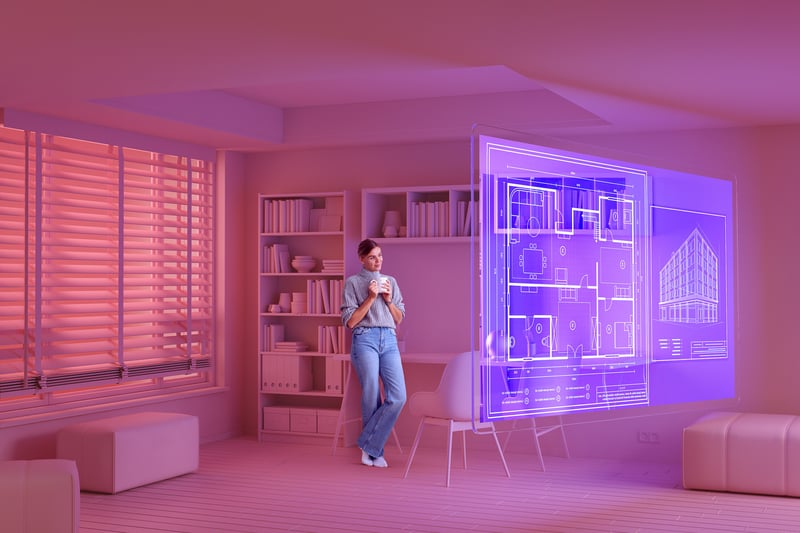Beyond technical functionality, thoughtful audio visual room design carries tremendous psychological impacts largely overlooked. A properly planned space conveys positive psychological cues that enhance user experience through increased comfort, focus and satisfaction according to studies in environmental psychology. This blog explores key psychological factors influencing how occupants perceive and interact within audio visual environments based on an audio visual diagram of needs and human behavior.
Evaluating User Experience Through Diagrams
User experience (UX) evaluation tools help designers analyze psychological impacts. At the core of UX is an audio visual diagram mapping user needs against core influencing factors. This includes the physical space (acoustics, lighting, comfort etc), integrated technologies and furniture layout. It also considers user attributes like demographics, abilities, priorities and mental models. By understanding these psychological dimensions, designers can structure spaces optimizing mood, wayfinding, comfort and focus according to human factors.
Influencing Spatial Cognition
Interior elements strongly affect spatial cognition, or an individual's mental model of their physical surroundings. Clear sightlines, straightforward flow and symmetry enhance cognitive maps within a room, reducing wayfinding stress. Distinct zones defined by materials, furniture or lighting aid orientation. Color and finish selections should complement the mind's natural construction of environmental layouts based on visual characteristics to support quick and intuitive movements and object placement. Wayfinding cues guide occupants smoothly to key areas.
Improving Acoustic Comfort
Acoustic comfort drastically impacts experience, yet remains underrated. Reverberation times, speech intelligibility specifications, sound masking and noise levels all factor into impressions of a room according to psychoacoustics research. Oversights yield distracted, irritable occupants. Proper soundproofing, absorption, insulation and ergonomic speakers eliminate auditory annoyances keeping users focused. Ambient sounds cover distractions pleasing the mind. Acoustics optimization creates soothing rather than stressful audio experiences.
Elevating Lighting Psychology
Lighting design strongly affects mood and wellness according to research. Bright, full-spectrum fixtures fight eyestrain and lethargy. Zoned task vs. ambient lamps alleviate visual discomfort. Light temperature should correlate to application preventing digital eyestrain. Daylight simulation through skylights boosts serotonin. Dimming sequences afford smooth transitions between activities. Circadian-friendly designs uplift energy naturally throughout the day. These biophilic touches fulfill basic cognitive-affective needs through luminous appeal and comfort.
Influencing Thermal Comfort
Alongside acoustics, thermal comfort constitutes a core human need with ramifications for mood and productivity. Variable temperatures lend control preventing hot/cold sensations improving attention and comfort according to studies. Cross-ventilation, passive heating/cooling and quality HVAC ensure optimal conditions. Building materials and insulation strategies yield naturally soothing, breathable environments avoiding spikes and drafts. User-controlled climate personalization brings satisfaction. These considerations optimize cognitive performance through biochemical and neurological processes.
Fostering Biophilia
Biophilic design instills positive emotions activating human affinity for nature. Live plant displays, exterior views and natural materials relieve stress hormones while connecting occupants to wider natural patterns central to human evolutionary psychology. Interior water features provide a calming, attention-restoring stimulus. Exposure to natural forms and patterns satisfies a congenital fondness for nature with links to concentration and wellbeing. Thoughtfully incorporating nature supports mental restoration important within dedicated work or learning spaces.
Promoting Ease of Collaboration
Arrangements supporting intended social interactions boost experiences according to environmental psychology research. In audio visual rooms, flexible, reconfigurable furniture promotes collaboration optimizing interactions. Open layouts invite mingling, while defined activity areas provide focus when preferred. Visual privacy nooks offer refuge from overstimulation. Clear sightlines prevent social anxiety and reassure group processes. These socially supportive considerations enhance comfort and satisfaction during people-oriented applications according to human preferences.
Facilitating Wayfinding
Clear wayfinding conveys a positive first impression of competence and hospitality according to environmental psychology principles. Well-marked intuitive pathways, readable floorplans and prominent landmarks aid unfamiliar visitors feeling secure instead of overwhelmed or disorientated. Repeated shapes, materials and themes unify otherwise complex environments. Distinct zone identifications prevent uncertainty. Features guide users rationally to key areas alleviating navigation stress. These measures foster positive initial and recurring experiences within innovative yet complicated facilities.
Conclusion
In conclusion, thoughtful audio visual room design carries immense psychological impacts on user comfort, focus, engagement and satisfaction beyond technical functionality. By understanding core influencing factors of spatial cognition, acoustics, lighting, thermal qualities, nature integration and social dynamics according to environmental psychology principles, planners can craft digitally immersive yet soothing environments optimizing the user experience holistically. A balanced, human-centric approach yields spaces uplifting mind and body naturally.







Top comments (0)